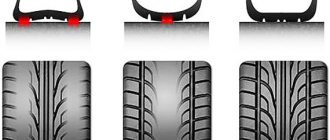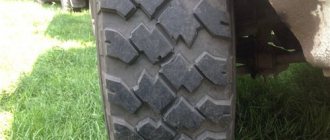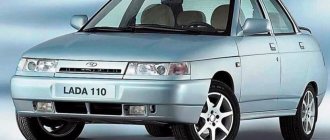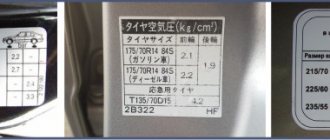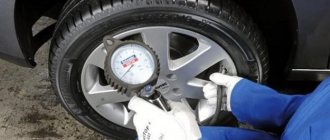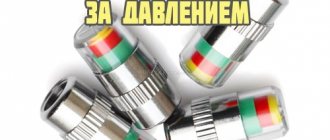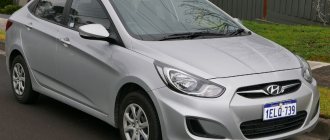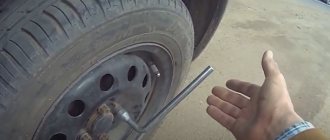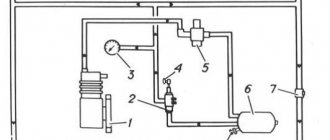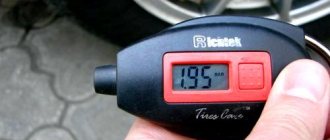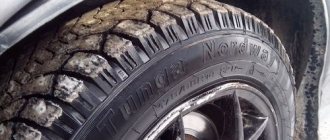In Russia, the popularity of domestic cars such as UAZ has not faded for many years. Everyone in our country knows that a loaf is not only bread, and a Patriot is not always a lover of the Fatherland. Well, the UAZ 469 – this utilitarian SUV is generally a legend of the Soviet automobile industry. All these cars have good cross-country ability, and their “survivability” is sometimes amazing, although more internal comfort would be nice.
Every motorist must monitor the air pressure in their tires. For each specific model of a UAZ vehicle, there are standards that are indicated in the vehicle’s passport or placed on the door arches, written on stickers.
Knowing what is the optimal pressure in UAZ tires is necessary in order to have good grip on the road surface and make the car easier to drive. This affects safety and comfort. Equally important is the effect of tire pressure on tire wear and fuel consumption.
Tire manufacturers also indicate recommended values. That is, it turns out that you need to put the wheels on the car according to the car’s passport, and inflate them as the developers of the “rubber” say. This will avoid under-pumping or over-pumping, which can lead to an emergency.
How to properly inflate tires
It is impossible to say unequivocally what the pressure in the tires of a UAZ vehicle should be. After all, several factors will influence the change in values.
- What model is the car and what wheels are installed.
For example, the pressure in UAZ Patriot tires with a size of 245/60 R18 should be 1.8 on the front wheels and 2.0 on the rear.
- The tire manufacturer also matters.
For example, the pressure in UAZ Bukhanka tires on the front wheel pair will be 1.7 for Yaroslavl tires and 1.9 for other manufacturers, and on the rear - 2.2 and 2.4, respectively.
- Pumping also depends on operating conditions and time of year of use.
For example, the pressure in summer tires can be increased slightly, but it must be remembered that when heated, the air expands, so the increase should be within 7%. In winter, on the contrary, it is necessary to lower the level of indicators, just as when driving off-road.
When buying wheels for your car, you need to think in advance about how, where and under what conditions they will be used. It is imperative to take into account the recommendations of car and tire manufacturers in order to select the appropriate tire model and inflate them as required, taking into account all the features.
Why follow the manufacturer's recommendations for tire inflation?
Knowing what is the optimal pressure in UAZ tires is necessary in order to have good grip on the road surface and make the car easier to drive. This affects safety and comfort. Equally important is the effect of tire pressure on tire wear and fuel consumption.
Tire manufacturers also indicate recommended values. That is, it turns out that you need to put the wheels on the car according to the car’s passport, and inflate them as the developers of the “rubber” say. This will avoid under-pumping or over-pumping, which can lead to an emergency.
Low pressure wheels
Many drivers, even those with significant driving experience, have no idea what low-pressure tires are and what they are needed for. Basically, only off-road enthusiasts have such information, equipping their “iron horses” with special wheels with increased width.
It is very rare to see cars with such “legs” within the city, and they also try not to drive them on the highway. There are reasons for this:
- Driving a UAZ all-terrain vehicle on low-pressure tires on asphalt is not easy.
- The maximum speed is 80 km/h.
Externally, the UAZ Patriot, which can often be seen in this form, looks very comical with these “shoes”. But all the touch of irony disappears as soon as you see with what dexterity these seemingly clumsy giants maneuver off-road. Naturally, it is impossible to achieve such agility through mud and potholes with conventional tires.
Features of low pressure tires
Now it's time to learn the secret of low pressure wheels. As an example, let's take AVTOROS M-TRIM tires (900-450x18), their size in inches is: 35.4x17.7 R18. It is worth saying that the invention of such wheels is an attempt to combine the wheels from an all-terrain vehicle and a regular all-terrain vehicle.
AVTOROS M-TRIM (900-450x18)
The former have excellent buoyancy, while the latter have exactly the opposite properties - the designers were faced with a difficult task. After all, it turns out that among the positive characteristics there is only an enlarged contact patch, but there is no powerful group of hooks, there is no hard cord of the sidewalls, but you cannot do without this on the roads.
What solution did the inventors find? They made an unusual tread pattern, and installed an anti-skid device inside the collapsible wheels - this is a thing that prevents the tire from coming off the rim.
- To drive on asphalt, the pressure in such tires must be 0.6 atm.
- On off-road conditions, such as swamp carpet, sand, snow, the manufacturer recommends lowering them to 0.15 atm.
It should be understood that a Patriot on low-pressure tires will not become like an all-terrain vehicle; if it gets into a body of water, it will simply drown. But off-road, he feels at ease and easily overcomes shallow wetlands, frolics on damp ground and climbs up hills.
Despite the peculiar tread, black soil or clay will still clog it if you drive on it for a long time, but there must be some difficulties, not everyone enjoys the ride. You can see how the car behaves in off-road conditions in the video.
According to UAZ Patriot owners who use similar low-pressure tires, when using wheels it is necessary to follow the manufacturer’s recommendations, that is, operate the car only in certain conditions with the required performance. It is equally important to improve the car itself, for example, strengthen the driveshafts and axle shafts.
In custody
In order for the operation of the car to bring positive emotions, you need to be more attentive to the manufacturers' recommendations. If you control tire inflation in accordance with the standards, this will not only make you feel more comfortable while driving, but will also increase the safety of the driver and passengers, as well as preserve the functionality of some parts of the car longer and save fuel.
The company that produces UAZ Patriot cars has established the following tire pressure parameters:
Tires 225/75R16 K-153, K-155 Front: 2.0 Rear: 2.4
Tires 235/70R16 KAMA-221 Front: 1.9 Rear: 2.2
Tires 245/70R16 K-214 Front: 1.8 Rear: 2.1
The manufacturer did not indicate under what conditions these figures should be considered acceptable.
The manufacturer has established the following weight distribution: – Curb weight 2125 kg. / front axle 1150 kg / rear axle 975 kg – Gross weight 2650 kg. / front axle 1217 kg / rear axle 1433 kg
Wheel balancing should not exceed 1000 g/cm.
Having analyzed this information, we can say with confidence that the pressure recommended by the manufacturer assumes a completely loaded car, because Only a loaded car meets the parameters of higher tire pressure.
Experts argue about what pressure in UAZ Patriot tires is considered acceptable. A good half of UAZ car owners do not share the manufacturer’s opinion on this issue. So, when choosing tire pressure, you should pay attention to the following factors:
1. There is no differential in the transfer case, so you need to make sure that all four tires have identical pressure. Even different loads with the front axle connected can cause the transfer case to break down. Tire manufacturers recommend disabling the front axle when it is not needed.
2. Tire type can also affect pressure. Be sure to check with the manufacturers of the tires you are purchasing about the best pressure for the UAZ Patriot. Buy proven tires for your vehicles, such as yokohama geolandar. Tire pressure is also affected by the size of the vehicle.
3. You should be aware that low tire pressure will significantly increase fuel consumption, as well as increase the load on the transmission and lead to rapid wear of the outer tread. Of course, with low tire pressure the ride is often smoother and more comfortable. When turning and various obstacles, air will escape from tires without tubes and with low pressure, and when hitting curbs, the condition of the wheels and rubber will deteriorate.
4. If, when driving onto a high curb, the disk of your car comes into contact with the curb, then the pressure is clearly not enough for driving through the urban jungle. It is important to know that driving on curbs has a bad effect on the condition of the tires. If a car with low tire pressure comes across an open hatch, it risks damaging the disc.
5. With low tire pressure on the UAZ Patriot, the specific pressure on the ground steadily decreases - this factor pleases off-road enthusiasts, as the vehicle’s cross-country ability increases.
6. With increased tire pressure, fuel consumption decreases, but wear on the tires in the tread area increases and the suspension and fastening systems are burdened with unnecessary work. Elements of the exhaust system may fly off; The mufflers fly off the fastest. Tires develop bulges and bumps over time. If the mounting points of the gearbox and transfer case fail, check the condition of the tires - perhaps the reason is due to increased pressure.
7. It is best when the size of all the tires of the car is the same - it is important to take into account the load. If only the driver is in the car, then the load on the front tires is higher due to the engine and if the pressure in all tires is equal, the front wheels will be less. If cargo is placed in the luggage compartment of the Patriot and passengers are placed in the cabin, the load between the front and rear tires will be changed taking into account the weight distribution.
8. Interestingly, tire pressure is affected by air temperature and sun activity.
9. During active driving, tire pressure may increase due to their inevitable heating. For this reason, the tire pressure of the UAZ Patriot must be diagnosed when the car is cold.
10. As soon as the cold season sets in, it is necessary to check the tire pressure, because... it could have gone down.
11. Off-road enthusiasts should know that when actively driving through the forest and in the complete absence of roads, tires need tubes, otherwise lateral loads will play a bad joke and the air will come out of the tires.
Car enthusiasts often do not pay enough attention to tire pressure. And it must be constantly monitored, otherwise the consequences can be the most unpredictable: from rapid tire wear to impaired vehicle controllability. In fact, the consequences are much greater, and if you do not follow certain rules for inflating tires, you can get yourself into a lot of trouble. But sometimes even experienced motorists don’t bother too much about optimal tire pressure. But each individual car requires a certain amount of air in the tires. And if these indicators do not meet the standards, then the tires and some components of the car quickly wear out.
UAZ Patriot cars are considered very durable and resistant to various loads. They are often used for off-road travel. Different wheel diameters require different tire pressures. For example, tires 225/75R16 K-153, K-155 require inflating the front tires to 2.0 bar, and the rear tires to 2.4. But tires 235/70R16 KAMA-221 already provide for other indicators: front - 1.9 atmospheres, rear - 2.2. Tires 245/70R16 K-214 require a pressure of 1.8 bar on the front axle, and 2.1 on the rear axle. The car manufacturer does not indicate for what conditions these parameters are considered to be the norm. But many car enthusiasts note that such requirements are more suitable for a loaded car. When the car is minimally loaded, the pressure readings should be slightly lower.
Tire inflation
The pressure in the wheels of the UAZ Patriot can be reduced slightly if this is for the benefit of the car and its owner. When severe discomfort is felt during a trip, or rattling is heard in the cabin, the air in the wheels can be deflated a little, despite the fact that the manufacturer has indicated clear parameters. And most UAZ drivers do this because they do not agree with the factory standards.
Many car enthusiasts do not know what exactly can happen if they overinflate or underinflate their tires. The most common problems:
- excessive fuel consumption;
- controllability problems;
- erasing side protectors;
- rapid wear of rubber;
- possibility of damage to the wheel rim;
- possible breakdown of some car components.
But with pumped ones there are already other difficulties:
- erasing the middle tread;
- loss of controllability;
- the appearance of bumps on tires;
- rattling in the car interior;
- inconvenience of movement.
It is precisely because of these reasons that it is worth constantly monitoring tire pressure.
The amount of air inside the wheel should only be checked when the tires are cold, otherwise the readings will be incorrect.
Ambient temperature also directly affects the atmosphere inside the wheel. For example, in winter, when the air temperature drops, the tire pressure also decreases. In summer, on the contrary, it rises. Therefore, measurements must be taken at least once a week. This can be done with a pressure gauge, which is sold in every car store. Such a device comes in several types and accuracy classes. Therefore, when purchasing, special attention should be paid to accuracy, since the further correctness of its operation depends on this.
Tire pressure gauge
Important units
Let's start with the fact that each car has its own rules and regulations regarding what operating pressure the tires should have. The norm is 2-2.4 atm, but everything is relative and varies depending on the parameters.
Therefore, if you have a VAZ, Mercedes, Toyota, Gazelle, Ford, Volkswagen or some type of truck, you need to look for a special sticker.
There is no universal formula even for a bicycle, car or some kind of motorcycle, for example. Therefore, UAZ Bukhanka, UAZ Patriot, Renault Duster and any other vehicle, including all-terrain vehicles, rely on the manufacturer’s recommendations. Factory stickers must be on all cars. But sometimes it wears out, wears out, or falls off. In such a situation, check the instruction manual for your model. Recommended pressures are indicated in this literature.
Now let's move on to what units of measurement are used. In Russia, for example, like many other countries, the unit of measurement is BAR (atmosphere). 1 atm equals 1 kgf/cm2. But if you go into details, then in 1 atmosphere there are 1.013 bar. In practice, it is not so important how much error there is between them. These units are equated to each other.
But in the USA they use the PSI unit. It shows the number of pounds per square inch. If the car is from the USA or the car contains recommendations for pressure in PSI, there will be no problems with conversion to conventional units.
To do this, just divide PSI by 14.5. That's all, the translation system is extremely simple.
How is pressure measured? The most common device is a pressure gauge. Every motorist has it, it is inexpensive, but it shows the pressure with a slight error.
- pumping is a pump that pumps air by working with arms or legs;
- compressor - connects to a power outlet or is powered from the on-board network;
- equipment at the service station.
Based on the make, model and installed wheels, it is not difficult to figure out what the normal tire pressure is. It is not enough just to have something that measures pressure. It is important to understand why this control is needed and what you need to know about swapping in general.
- Pressure checks and adjustments are carried out when the tires have not yet warmed up. That is, before the trip, and not during. This will allow you to obtain the most accurate parameters without error. If the tires warm up, the pressure on the pressure gauge will increase. In winter it decreases. In general, the error is usually from 0.2 to 0.4 Atm.
- In winter and summer, the wheels should be inflated and lowered. If you overinflate tires in winter, they will become more oaky, causing you to start jumping on the roads and losing contact area between the tires and the road surface. In summer, on the contrary, it is better to inflate the tires so that the rubber does not float and retains its performance characteristics longer. Car manufacturers must indicate the recommended pressure for winter and summer conditions. Follow these rules and everything will be fine.
- Check your metrics periodically. Even if a couple of days ago the pressure was normal, today the wheel will lose some air. In summer, it is recommended to check once every 1-1.5 weeks. When operating the vehicle in winter and on bad road conditions, the check is carried out once every 5 days.
- If your tires are overinflated beyond the recommended levels, be sure to deflate the excess air. This is easy to do. The cap is unscrewed from the nipple and the valve pin is pressed. Many pressure gauges have a special element that makes it convenient to press this pin and instantly check the updated readings.
- Warped rims lose air faster, so they will have to be pumped up more often. Therefore, if it is not possible to replace the wheels, try checking with a pressure gauge and inflating your tires every 2-3 days.
Many modern cars are equipped from the factory with tire pressure sensors, which greatly simplifies monitoring tasks for drivers. They will be able to tell you when your low-pressure tires are underinflated or have received too much air during the inflation process.
If you think that overinflating a tire is better than underinflating it, you are seriously mistaken. There is only one correct pressure - the optimal one specifically for your car, provided by the automaker.
Everything else is over-pumping or under-pumping. For a passenger car, like a truck or other vehicle with wheels, both options pose a certain threat.
Underpumping
If the tires on your car are not filled enough with air, then:
- fuel consumption will increase;
- the dynamics of the vehicle will decrease;
- the rubber will heat up faster;
- The wheels will start to wear out faster;
- the likelihood of the car drifting or skidding will increase;
- high probability of disassembly;
- The quality of control decreases, the steering wheel commands become worse.
As you can see, everything is very serious. Therefore, make sure that the pressure is normal.
Pumping
There are situations when car owners overinflate the tires on their cars. Moreover, this often happens due to simple laziness to bleed off excess air by holding the valve for a few seconds.
But such situations have unpleasant consequences:
- there is a high probability of a hernia appearing on the tires (especially if the roads are of dubious quality, of which there are many in our country);
- the process of erasing the rubber tread (its central part) is accelerated;
- the contact patch with the road becomes smaller, which causes the level of adhesion to deteriorate;
- the load on the chassis of the vehicle increases;
- background noise increases while driving;
- the car becomes less smooth;
- on every bump you literally jump (with a strong jump, the driver can simply take his hands off the steering wheel and lose control).
And there is nothing good here. Therefore, too high blood pressure is also evil.
Be sure to periodically check the tire pressure parameters and adjust it according to the recommendations for the technical operation of your particular vehicle. The optimal pressure is affected by the make, model, engine type, wheel size, etc. The tables and tips provided will help you with this.
The Ulyanovsk-made SUV UAZ Patriot first rolled off the assembly line in 2005, and it was from that time that it gained wide popularity among UAZ drivers. Today, the UAZ Patriot SUV continues to be produced and is supplemented with more modern and improved parts every year. In this material, we will consider such a detail as a tire, or rather, what should be the pressure in the tires of a popular SUV. After all, not only the correct operation of the car, but also the safety of the driver and passengers depends on the tire pressure.
The wheels of a UAZ Patriot are those parts that are directly involved in its off-road capability. In addition, tires make the car more stable both on the road and on rough terrain. Often, most owners of a popular SUV, after purchasing it, seek to replace the standard tires with ones more suitable for their specific purposes. Among these actions, it is important to pay attention to the pressure in the tires of the SUV. After all, some are accustomed to inflating wheels to 2 atmospheres or more, others, on the contrary, believe that a volume of 1.8 atmospheres is enough. But today we won’t guess what the pressure should be in the Patriot’s wheels, but rather find out the real data.
Tires for the UAZ Patriot SUV come in the following modifications and purposes:
- All-season, which can be used both in summer and winter.
- Mud, intended for vehicle operation in off-road conditions.
- Winter, which is intended for use only in winter to be able to overcome various snowy areas.
- Road, used in summer, for driving on asphalt roads and in the city. Useless in winter and off-road conditions.
There are also types of rubber such as extreme - rubber of increased size and low pressure. In addition, rubber differs in parameters, the most common of which are:
- tire width;
- profile;
- tire diameter.
Depending on these parameters, the wheels should be inflated accordingly. So, the tire pressure on the UAZ Patriot must correspond to the following parameters given in the table below.
| Tire pressure, atm | Engine capacity 2.7 | Engine capacity 2.2d |
| for front wheels: | ||
| 225/75 R16 | 2 | 2,2 |
| 235/70 R16 | 1,9 | 2,2 |
| 245/70 R16 | 1,8 | 1,9 |
| 245/60 R18 | 1,8 | 1,8 |
| for rear wheels: | ||
| 225/75 R16 | 2,4 | 2,4 |
| 235/70 R16 | 2,2 | 2,2 |
| 245/70 R16 | 2,1 | 2,1 |
| 245/60 R18 | 2 | 2 |
You need to take care of the wheels of your car first of all, since they are the elements and parts on which the safety of the car depends. There are some recommendations that must be followed. These recommendations have the following characteristics:
- It is recommended to use all four wheels of the same width, diameter and model on the car, or install them in pairs, that is, the same in front and the same in the rear.
- When checking tire pressure, you should measure it in all four wheels, not just one.
- To find out if the nipple is leaking air, you need to check it with soapy water. If the air is bleed, you should install a special cap or replace the nipple.
- Front wheels tend to wear out faster, even on all-wheel drive SUVs. Therefore, it is recommended to periodically (every 10,000 km) install them on the rear axle.
- After running-in on new tires, it is necessary to carry out balancing. The approximate run-in mileage for balancing is about 500 km.
- The tire pressure of a UAZ Patriot SUV directly affects the service life of parts such as the engine, transmission, differential and axle. In addition, this also affects fuel consumption, which is a significant parameter.
Optimal pressure parameters
The optimal amount of air that should be in the tires of an SUV is calculated at the factory, and therefore if you decide to overinflate the wheel, then this may threaten it with rupture. Otherwise, when driving on overinflated wheels, a sharp deterioration in comfort will be noticeable. Why? Because the tire will lose its shock-absorbing properties and even the slightest holes, stones and bumps will be transmitted by impacts to the body.
A more detailed table showing the optimal tire pressures for the UAZ Patriot is given below.
A significant role is played by the curb weight of the SUV, which must meet the following parameters:
- the gross vehicle weight is 2600 kg;
- the front axle has a load of 1217 kg;
- the rear axle has a load of 1430 kg.
When pumping or inflating tires, it is important to follow the following list of important recommendations:
- When pumping, it is necessary to take into account the type of tire; often the manufacturer himself recommends the optimal pressure value.
- When tire pressure is reduced, the effect of increasing the cross-country ability of an SUV is observed.
- If the pressure in the wheels decreases, this negatively affects the transmission, and fuel consumption also increases. Many people notice that with slightly flat tires, the car becomes more comfortable when driving over bumps, but in fact, in such a situation, all the negative factors on the rim and tires of the car are multiplied.
- On an SUV, it is important to engage the front axle only when it is needed, otherwise operation in all-wheel drive mode for a long time will result in failure of the transfer case and increased wear of the front tires.
- The pressure in SUV tires should be inflated and checked at a temperature no higher than 20 degrees and no lower than 0, otherwise the error in the readings will exceed 10% or higher. Why? Because under the influence of sunlight, rubber heats up and the air in it expands, so there is a risk of overinflating it. In winter, on the contrary, the tires narrow and the pressure drops.
Car enthusiasts often do not pay enough attention to tire pressure. And it must be constantly monitored, otherwise the consequences can be the most unpredictable: from rapid tire wear to impaired vehicle controllability. In fact, the consequences are much greater, and if you do not follow certain rules for inflating tires, you can get yourself into a lot of trouble. But sometimes even experienced motorists don’t bother too much about optimal tire pressure. But each individual car requires a certain amount of air in the tires. And if these indicators do not meet the standards, then the tires and some components of the car quickly wear out.
UAZ Patriot cars are considered very durable and resistant to various loads. They are often used for off-road travel. Different wheel diameters require different tire pressures. For example, tires 225/75R16 K-153, K-155 require inflating the front tires to 2.0 bar, and the rear tires to 2.4. But tires 235/70R16 KAMA-221 already provide for other indicators: front - 1.9 atmospheres, rear - 2.2. Tires 245/70R16 K-214 require a pressure of 1.8 bar on the front axle, and 2.1 on the rear axle. The car manufacturer does not indicate for what conditions these parameters are considered to be the norm. But many car enthusiasts note that such requirements are more suitable for a loaded car. When the car is minimally loaded, the pressure readings should be slightly lower.
Tire inflation
The pressure in the wheels of the UAZ Patriot can be reduced slightly if this is for the benefit of the car and its owner. When severe discomfort is felt during a trip, or rattling is heard in the cabin, the air in the wheels can be deflated a little, despite the fact that the manufacturer has indicated clear parameters. And most UAZ drivers do this because they do not agree with the factory standards.
Many car enthusiasts do not know what exactly can happen if they overinflate or underinflate their tires. The most common problems:
- excessive fuel consumption;
- controllability problems;
- erasing side protectors;
- rapid wear of rubber;
- possibility of damage to the wheel rim;
- possible breakdown of some car components.
But with pumped ones there are already other difficulties:
- erasing the middle tread;
- loss of controllability;
- the appearance of bumps on tires;
- rattling in the car interior;
- inconvenience of movement.
It is precisely because of these reasons that it is worth constantly monitoring tire pressure.
The amount of air inside the wheel should only be checked when the tires are cold, otherwise the readings will be incorrect.
Ambient temperature also directly affects the atmosphere inside the wheel. For example, in winter, when the air temperature drops, the tire pressure also decreases. In summer, on the contrary, it rises. Therefore, measurements must be taken at least once a week. This can be done with a pressure gauge, which is sold in every car store. Such a device comes in several types and accuracy classes. Therefore, when purchasing, special attention should be paid to accuracy, since the further correctness of its operation depends on this.
Tire pressure gauge
Tire pressure of UAZ “Bukhanka”
According to the passport, the atmosphere indicators inside the wheel should correspond to 2.2-2.4 bar. But such measures are typical for city roads. For off-road use, a lower pressure is suitable. Fans of trips outside the city note that the recommended parameters are not very suitable for such roads. The car drives very hard and you feel discomfort while driving. But if the car is expected to be heavily loaded, then air will have to be added to the rear tires. As the tire diameter increases, tire pressure decreases.
The UAZ-3303 model, according to the manufacturer’s recommendations, provides the same pressure in all wheels, which is 2.0 bar. But as the load increases, it must be raised to 2.2 atmospheres. These parameters are typical for the summer period. But in extreme heat, you should carefully monitor the indicators, as the amount of air in the tires increases in summer. And therefore, before the trip, it should be checked and lowered a little if necessary.
On a note!
If the check is planned after the trip, then this should be done only after the car has been idle for two hours. During this time, the wheels will cool down and the pressure in them will stabilize. Owners of such cars recommend deflating the tires a little when driving off-road, but only by no more than 0.3 bar. This will ensure a smooth ride and comfortable movement.
General background information
Ranges of possible values for UAZ Profi 2019 tires and wheels.
Tires
| Diameter | 16″–16″ |
| Width (mm) | 225–225 |
| Profile (%) | 75–75 |
| The smallest size | 225/75 R16 |
| The biggest size | 225/75 R16 |
Wheel disks
| Diameter | 16″–16″ |
| Width (inches) | 6.5–6.5 |
| Reach (mm) | 40–40 |
| Drills | 6×139.7 |
Expert advice
When choosing tires for a car, you must first follow the manufacturer's instructions. Ask yourself a few questions.
- On what roads will the car be primarily used?
- Do you need increased cross-country ability?
- How much of the route will be city roads and how much will be highways?
- Will the vehicle carry heavy loads?
The answers to these and similar questions will help determine which tire parameters you need to pay special attention to.
How to choose the right wheels for UAZ Pro 2022?
3 types of rims:
- Stamped (economical price category) - made from a sheet of iron by stamping on a press.
- Light alloy - manufactured by casting (more reliable than stamped ones).
- Forged (the highest quality and more expensive than the previous ones) - made from light alloys by stamping at high temperatures.
The choice depends on financial capabilities. However, it should be borne in mind that the quality of the road surface on which you have to drive every day must also be taken into account.
So, if it gets into a hole, a stamped disk will bend and will not cause harm to the tire, but a forged or cast one can cut it. There is a possibility that the cast disc may burst or crack.
It should also be noted that repairing “stamping” wheels is cheaper than repairing cast or forged wheels. But wheels with high-quality cast and forged disks kill the suspension less, because lighter and have more perfect geometry (better balanced).
The same wheels may or may not rub with tires on the same car - wheel alignment adjustment will help here.
What is the tire pressure?
It is the driver's responsibility to constantly monitor tire pressure. This will avoid standard problems associated with vehicle operation. An abnormal pressure value often causes:
- deterioration of management;
- uneven tread wear.
Often the car owner independently reduces the pressure in the wheels of his own vehicle. This reduces the load on the suspension, and the car “passes” various road irregularities an order of magnitude easier. But it is worth noting: a decrease in pressure even by 0.1 MPa leads to serious problems. The main ones include:
- increased fuel consumption;
- rapid wear of the outer tread segments;
- the car becomes less maneuverable.
An overinflated wheel causes no less problems. The central part of the cylinder begins to wear off quickly. In addition, at ambient temperatures of more than 60 degrees Celsius, the tire may simply explode. Which will lead to driving into the oncoming lane.
© 2019-2021 Avto Sprav. Directory of factory parameters of disks and tire sizes.
Attention! Our catalog is an information resource and does not guarantee full compliance of the proposed dimensions with your car. Make sure that your car has wheels of the appropriate radius.
The thesis that tire pressure must be correct is undeniable. Educational programs on this topic are popping up almost every day—I won’t repeat myself. Another question is much more interesting: what is “correct”? How simple it is if you leave the standard wheels on the Patriot! I opened the instruction manual, found with my eyes one of the sizes installed at the factory and inflated the wheels to the pressure indicated there. It’s just a pity that I don’t want to ride on such wheels in an UAZ!
